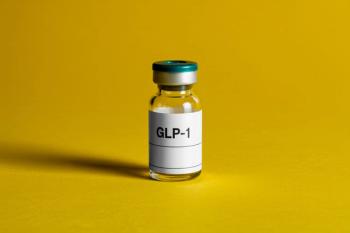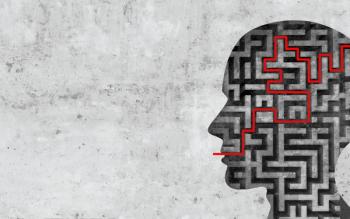
Psychosomatic Medicine in the Clinic and the Lab
The fiscal 2007 budget that PresidentBush proposed in early February keepsa tight lid on most domestic spendingprograms, including those at the Centersfor Mental Health Services (CMHS)and the National Institute of MentalHealth (NIMH). Budgets for both willactually decrease for the second yearin a row unless Congress steps in.
The fiscal 2007 budget that PresidentBush proposed in early February keepsa tight lid on most domestic spendingprograms, including those at the Centersfor Mental Health Services (CMHS)and the National Institute of MentalHealth (NIMH). Budgets for both willactually decrease for the second yearin a row unless Congress steps in.
The NIMH budget cut is just shortof $9 million, dropping the overallbudget to $1.4 billion, not a cataclysmicdrop in the scheme of things. TheCMHS budget would be hit harder,losing 4%, or $35 million, almost allof that reduction coming from Programsof Regional and National Significance(PRNS). The programs hit hardestare school violence prevention andstate mental health transformation activities. The drop in funding comesprimarily from not initiating newgrants to replace older grants thatreach the end of their funding cyclein fiscal 2006.
In a statement about the proposedfiscal 2007 budget, the National MentalHealth Association cited a laundry listof expanding demands on community mental health services and added,. . . we must accelerate our commitmentto mental health. But rather thanincreasing funding levels to addresssuch needs, this budget would retreatfurther. To illustrate, the budget for theprincipal federal agency charged withpromoting excellence in mental healthcare, the Center for Mental HealthServices (in the SAMHSA), would see its funding shrink to levels close towhere they were in FY 2002.
The reduction in spending for mentalhealth transformation, an initiativeestablished based on recommendationsfrom President Bush's New FreedomCommission, may be mitigated to someextent if the CMHS is successful inconvincing Congress to force states touse some of their community mentalhealth block grant funds for transformationactivities. The transformationprogram seeks to help states createsystems that are more family centered,reduce reliance on institutional settings,and allow for seamless navigation andtransition through local mental healthservices.
CMHS, says the agency wants states touse the increased amount of their blockgrant over 1998 levels for transformationactivities.
The transformation grants to stateshave been somewhat controversial,owing to the criticism of some politicallyconservative groups thatthey further mental health screeningof children, which these groups oppose.No language in the grant requirementsmandates testing of anyone,however. The first 7 grants were announcedin 2005 and money wascommitted to those states for 5 years.Programs in those 7 states are servingas pilot programs.
But the CMHS transformationbudget, which is included in the PRNS,has been declining since its first yearin fiscal 2005, when it was $66.9 million.It dropped in fiscal 2006 to $48 million,and President Bush wants to cut itfurther in fiscal 2007 to $39 million.Part of that total goes to the 7 states thatwon grants in fiscal 2005. The grantsto the states would drop from $25.7million in fiscal 2006 to $19.8 million.Power said fiscal 2007 is the secondyear for the state grants, and all 7 wouldreceive what they were promised in2005. She noted that the grants aresubject to the annual approval of congressionalappropriations committeesand implied that nothing is guaranteed.
School violence prevention grantswould also fall by $17.5 million, to $75.7million. That is the result of existinggrants coming to a natural end andCMHS not using the money from thoseto fund new grants. Power alluded tothe constrained budget environmentto explain that decision. She added thatthe CMHS is waiting to get some baselinedata on increases or decreases inschool violence in fiscal 2006 to helptarget the money.
While CMHS apparently wantsstates to use block grant funds for transformationactivities, the block grantsin fiscal 2007 would actually drop abit, to $428.4 million, a reduction of$174,000. Block grant funds are supposedto be used to help move adultsand children with mental illnesses fromcostly and restrictive inpatient hospitalcare into the community.
The CMHS would fund only 1 newprogram in fiscal 2007, an AmericanIndian/Alaska Native Youth SuicidePrevention Initiative funded at $3million. At hearings before the SenateIndian Affairs Committee on June 15,2005, Richard H. Carmona, MD,MPH, the US Surgeon General, notedthat based upon the most recentdata from the Indian Health Service,the suicide rates for American Indiansand Alaska Natives are many timesthe national average for other populationgroups.
The 21st century has begun aspromising for the subspecialty ofpsychosomatic medicine (PSM),formerly known as consultation-liaisonpsychiatry. Psychosomatic medicine isnow formally recognized by theAmerican Board of Psychiatry andNeurology, which offered the first boardcertification examinations for PSM in2005. The scientific knowledge base onillnesses at the psychiatric-medical interfacecontinues to increase exponentially,just as the range of diagnostic and therapeuticoptions in psychosomatic medicinecontinues to expand rapidly. Inaddition, the effect of psychiatric comorbidity,increasing medical complexity,and resource-intensiveness of medicalpatients continues to be significant, evenin the era of managed care. As the clinicalsubspecialty that bridges generalmedicine and psychiatry in the care ofpatients with major medical and psychiatricillnesses, PSM has much to contributein addressing the challengesposed by these complex cases.
The current roles for PSM psychiatristsmay be conceptualized alongseveral dimensions. Their traditionalrole in the diagnosis and managementof comorbid psychiatric illness in medicaland surgical inpatients will continueto be critical in enhancing patientoutcomes. The facilitation of promptdisposition of the psychiatric aspectsof cases will maximize the efficientfunctioning of hospitals and medicalcenters. In addition to this, the increasein the use of outpatient models of carehas led to the expansion of PSM tooutpatient specialty clinic settings, suchas internal medicine, endocrinology,obstetrics/gynecology, and neurologyclinics. PSM psychiatrists have beenquick to embrace the use of advancedcommunications technology. Telemedicineinstant messaging systemsprovide PSM consultation to distantrural medical clinics where psychiatricresources are often unavailable. Whileworking to help medical specialists inthe clinical care of outpatients, PSMspecialists are helping to educate andempower these physicians in the consultativeand collaborative models ofcomanagement of psychiatric illness inmedical and surgical patients.
New research in delirium anddementia allows for a greater range ofdiagnostic and therapeutic interventionsin these conditions, which areincreasingly common in hospitalized patients as the population ages andbecomes more chronically ill. In addition,psychiatric involvements in legalmatters, such as the determination ofcognitive capacity for informed consentand consultation to bioethics committees,are central roles for PSM psychiatristsat many institutions.
Given the rapid pace of these developments,there is a need for a timelyreview of current critical topics in PSMfor the general psychiatrist. There willcontinue to be a need for the generalpsychiatrist to function in a PSM modelfor part-time or occasional coverage ofhospitalized medical and surgicalpatients--and there will remain a specialneed for psychiatrists who practice inrural or other areas far from academicmedical centers where subspecialtyboardPSM psychiatrists are located. Inaddition, more progressive outpatientclinical care systems may increasinglyroutinely employ PSM psychiatrists ina specialty or primary care setting wherethey will encounter psychiatric illnessesin medical and surgical patients. Wehope that this Special Edition ofPsychiatric Times, covering some of thestate-of-the-art evolving areas of PSM,will be of direct and practical benefitto a large number of our general psychiatriccolleagues.
Drs Herb Ochitill and Dennis H.Novack start this special issue with asuccinct overview of some of the majorareas of current research in PSM,including various aspects of neuroscience,psychoneuroimmunology, anddepression and heart disease. They thenbriefly review progress in and proposalsfor improving the inclusion of thepsychosomatic approach in medicalschool curricula.
Dr Stephen Saravay reviews thehistory of PSM as it pertains to interdisciplinaryresearch and outcomesstudies in medical/surgical patients withcomorbid psychiatric disorders. He alsodiscusses the role of modern integratedcare models, in which PSM psychiatristsand other specialty physiciansfunction in a collaborative fashion.
Dr Carol Alter addresses the psychiatricneeds of patients with chronicmedical illness. Despite researchdemonstrating the high degree ofpsychiatric comorbidity in chronicillness (which leads to increased use ofmedical resources, decreased adherenceto medical regimens, and increasedpatient suffering), access to and reimbursementfor psychiatric care in chronicallymedically ill patients remaingreat challenges. Fortunately, severalinitiatives by the Academy of PsychosomaticMedicine and the AmericanPsychosomatic Society have begun toaddress this significant disparity inaccess and reimbursement.
Drs Christian Nelson and AndrewRoth address the problem of cognitivedisorders following cancer chemotherapy.This article may serve to introducereaders to the special interest area withinPSM of psycho-oncology. While theemotional problems following cancerdiagnosis and treatment tend to be morereadily appreciated by clinicians, thecognitive disorders may significantlylimit patient function and need to beaddressed separately.
Dr Keith Rasmussen provides auseful overview of the current applicationof electroconvulsive therapy inpatients with systemic illness. Electroconvulsivetherapy requires specificconsiderations in the management ofpsychiatric syndromes in patients withserious systemic conditions such ascardiovascular disease, neurologicillness, respiratory disease, diabetesmellitus, and pregnancy.
Finally, Drs Richard Shaw andRebecca Bernard describe and highlighta common condition in PSM: posttraumaticstress disorder associatedwith medical illness and invasive interventions.By thoughtfully extending thepsychodynamic concept of trauma toinclude disease and its management,this article illuminates a common andimportant PSM problem
We are experiencing a resurgent interestand revitalization in the subspecialtyof PSM. All psychiatrists must expectto be able to function competently in aPSM model when called on and are alsoencouraged to develop and nurturecollaborative and collegial relationshipswith university-based dedicated PSMsubspecialists for case-specific adviceand access to current thinking on clinicalPSM interventions. Psychosomaticmedicine will continue to providecrucial clinical functions for our physiciancolleagues in other specialties.As psychiatrists, we all have a responsibilityto maintain familiarity with clinicaltrends in PSM, be aware of currentPSM research advances, and applyPSM principles to the general practiceof psychiatry.
Dr Bourgeois is Alan Stoudemire Professor ofPsychosomatic Medicine and associate professorof clinical psychiatry at the University ofCalifornia, Davis School of Medicine.
Newsletter
Receive trusted psychiatric news, expert analysis, and clinical insights — subscribe today to support your practice and your patients.














